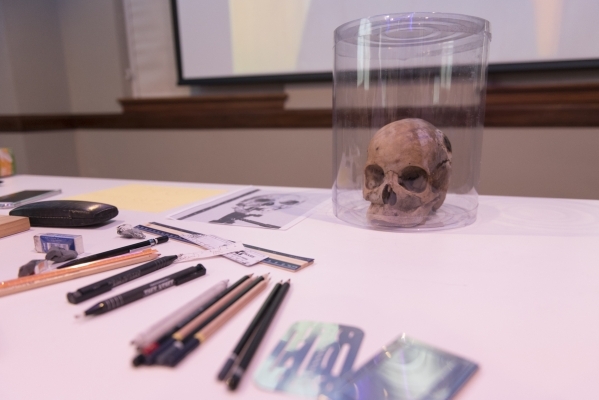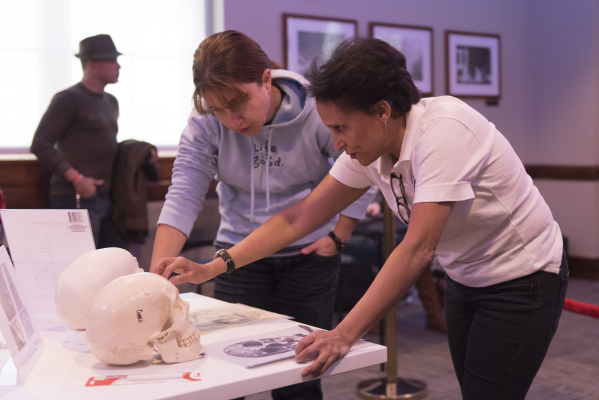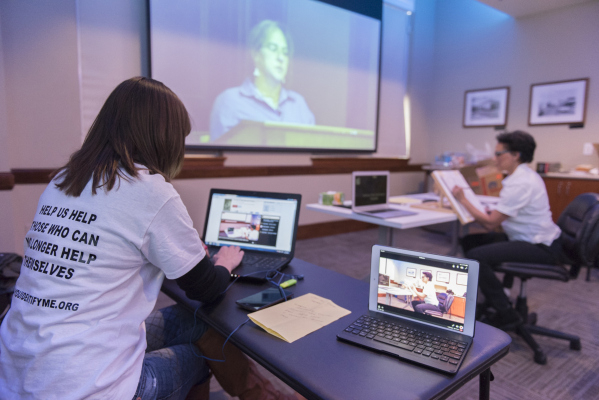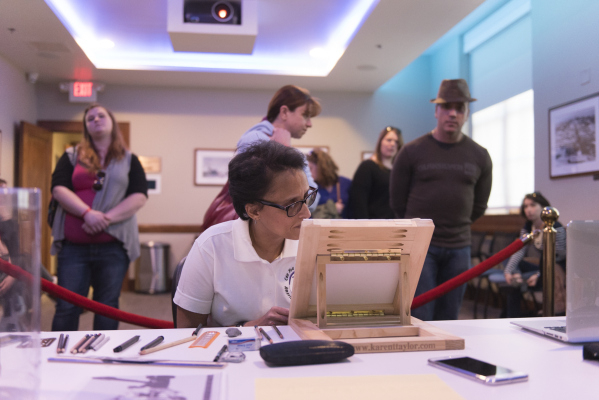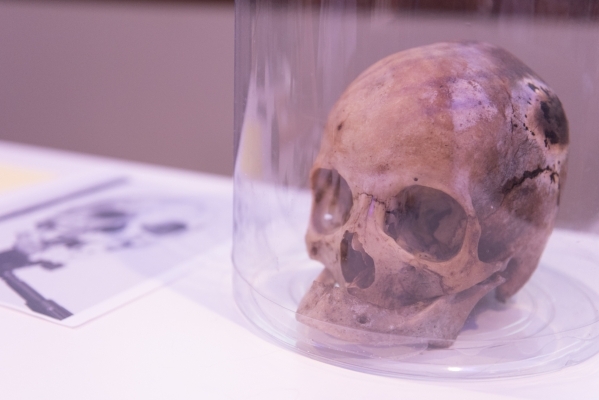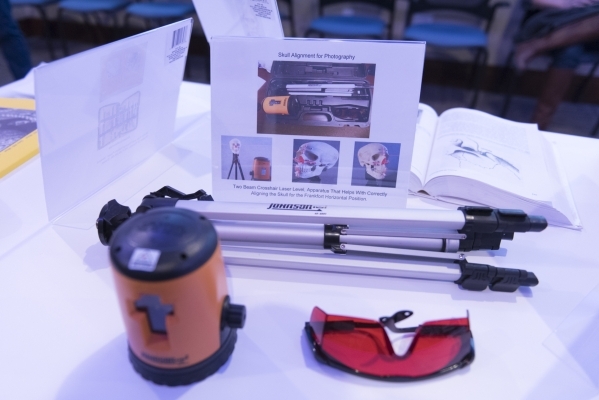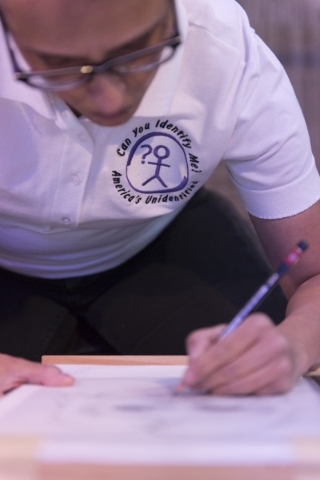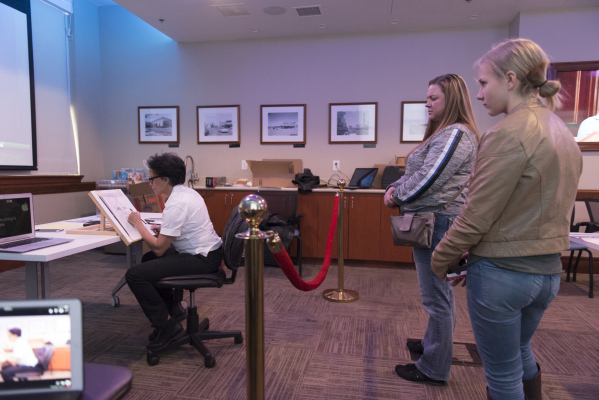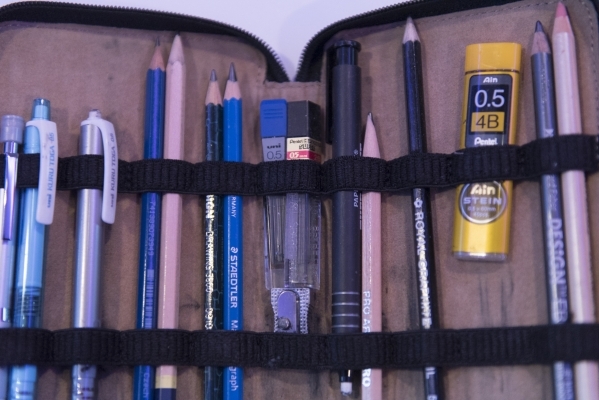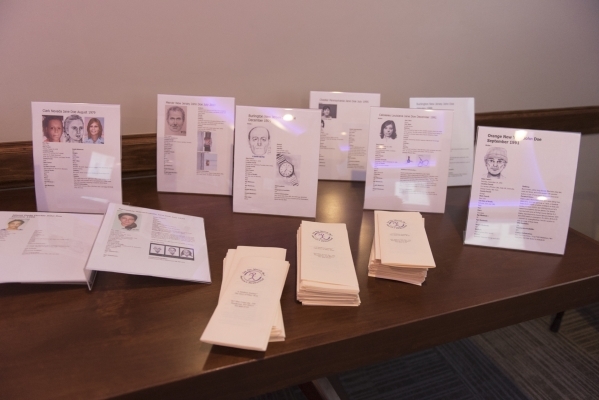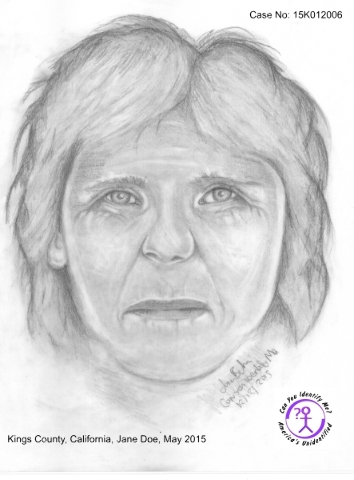Forensic artist draws a clue in hopes of solving a crime
The blank, white paper in front of freelance forensic artist Jane Billingham lays over a photo of a skull.
As a Jane Doe case — the police now refer to her as Margaret Doe — the skull has no identity and the case has no new leads.
Billingham is the next effort to help identify the remains and perhaps even bring about justice.
She draws.
First she does the eyes, then the nose, filling in feature after feature until the frame is complete and a face is recognizable.
"It's usually those features that will trigger something," she says. "(Margaret Doe) has this unique thing with her nose. I bet that's what will stand out."
The live forensic sketch was part of The Mob Museum's event on Dec. 12 to talk about forensic artistry and the importance of it. Along with sketching the skull, the event featured completed sketches of unidentified cold cases believed to be connected to the mob or human trafficking.
To offer the event, the museum partnered with local nonprofit Can You Identify Me? The group seeks to put a face to those who have not been identified.
"It's better to have this sketch opposed to post-mortem images or no image at all," says founder Rebel Morris.
It can be that sketch that helps a parent identify a child and bring closure to a case, Morris adds.
In 2007, Morris began a blog to talk about cold cases and unidentified remains. From there, Morris teamed up with a medically trained forensic artist, a former "America's Most Wanted" producer, a victim's family and a deputy coroner to bring a face to unidentified individuals.
It officially became a nonprofit in 2011, which has worked with cases across the country.
The organization has helped with the identification of 162 cases.
"We don't take credit for that," Morris says, giving accolades to detectives and forensic experts working on the case.
Since the organization started a few years ago, Morris has brought in forensic sketch artists — all volunteers — such as Billingham.
Billingham started out as an artist but longed to do something more with her skills.
After attending a workshop six years ago, she decided to learn the skills to become a forensic artist.
Since, Billingham has completed classes in 3-D forensic sculpture, 2-D forensic art and digital post-mortem forensics.
Forensic art has been around for 100 years, she says, but advances in technology have helped it progress.
In order to do her job, it starts with a skull.
A forensic anthropologist makes markers along the skull to highlight certain features that could indicate age or anything unique to the person. Then, a photo of that skull, with the markers included, is handed over to an artist.
Billingham can spend hours bringing the face to life.
"It just depends on the skeleton," she adds.
Though the sketches might not be 100 percent accurate, it's a start to help the case advance.
"This is the next best thing if there is not DNA or anything else," Billingham says,
After two hours, most of the features on Margaret Doe's face have developed, but Billingham keeps going back to fine tune her work.
Detective Sam Weimer of Kings County, Calif., says the remains of Margaret Doe were found back in May.
"She was dumped on the side of the road," he says. "We had a forensic anthropologist estimate she was between 60 and 80 years old."
There were no DNA hits or any other pieces of evidence to go by.
But as Billingham continues her sketch, Weimer hopes it can lead to something new.
"We will do a media blast once the sketch is done," he says. "We hope to get her identified and inform her family."
Watching this nameless, faceless skeleton come to life through each pencil stroke has been an experience for Weimer.
"It puts this case in a whole new perspective," he adds.
Though she has done it countless times, it can still be hard for Billingham from time to time.
"These are human beings," she says. "You can't help not to be sad. You just have to learn to shut it off and do the job."
Contact reporter Michael Lyle at mlyle@reviewjournal.com or 702-387-5201. Follow @mjlyle on Twitter.





